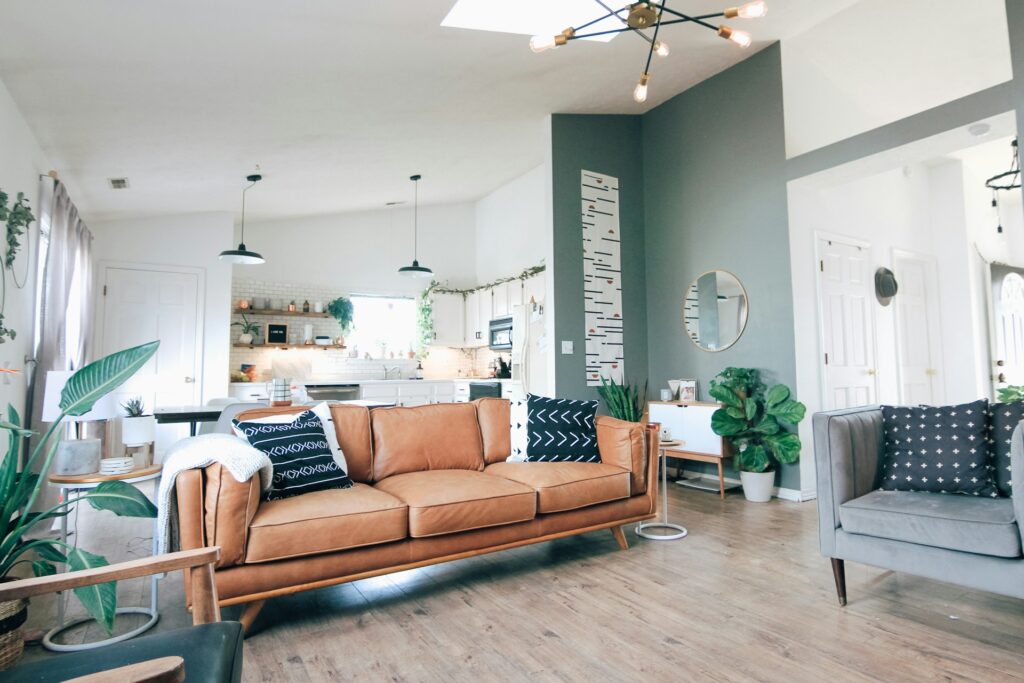Introduction: In this comprehensive guide, we delve into the art of home interior design, exploring every facet from its historical roots to modern innovations. Whether you’re a novice decorator or a seasoned pro, this article will equip you with the knowledge and inspiration to craft a space that truly reflects your personality and lifestyle.
Define the Concept of Home Interior Design
Home interior design encompasses the arrangement and decoration of living spaces to enhance aesthetics, functionality, and mood. It’s the creative fusion of furniture, colors, textures, and accessories to create harmonious environments that cater to the needs and preferences of inhabitants.
The Relevance and Importance of Interior Design
Effective interior design goes beyond mere aesthetics; it influences mood, productivity, and well-being. By optimizing spatial layouts and selecting appropriate elements, interior design can transform houses into homes, fostering comfort, and a sense of belonging.
Types and Categories
Traditional Interior Design
Drawing inspiration from classic European styles, traditional interior design exudes elegance and sophistication. Rich fabrics, ornate furnishings, and timeless accessories characterize this style, creating warm and inviting spaces reminiscent of bygone eras.
Modern Interior Design
Sleek lines, minimalist aesthetics, and innovative materials define modern interior design. Embracing simplicity and functionality, this style prioritizes clean, uncluttered spaces infused with contemporary flair. Neutral palettes, open layouts, and statement pieces are hallmarks of modern design.
Eclectic Interior Design
For the adventurous at heart, eclectic interior design offers boundless creative expression. By blending elements from various styles, periods, and cultures, eclectic interiors reflect individuality and personality. Bold colors, diverse textures, and unexpected pairings converge to form visually dynamic and eclectic spaces.
Symptoms and Signs
Disorganized Spaces
A cluttered or disorganized home can signify the need for improved interior design. Symptoms may include difficulty navigating rooms, feeling overwhelmed by clutter, and a lack of cohesion in decor.
Poor Lighting
Inadequate lighting can adversely affect mood and productivity. Signs of poor lighting include dim or harshly lit areas, shadows that obscure details, and a lack of natural light.
Uncomfortable Furniture Arrangements
An uncomfortable or awkward furniture layout can disrupt the flow of a room and detract from its functionality. Symptoms may include cramped spaces, obstructed pathways, and furniture that feels out of place.
Causes and Risk Factors
Lack of Planning
A common cause of poor interior design is a lack of comprehensive planning. Rushed decisions, impulsive purchases, and neglecting to consider the overall design scheme can result in disjointed and unsatisfactory outcomes.
Ignoring Personal Style
Neglecting to incorporate personal style preferences can lead to spaces that feel generic or uninspired. Failing to consider individual tastes, interests, and lifestyle needs may result in interiors that lack character and fail to resonate with inhabitants.
Budget Constraints
Limited financial resources can pose challenges when it comes to interior design. Costly furnishings, renovations, and decor items may be out of reach, forcing individuals to compromise on quality or forgo essential elements altogether.
Diagnosis and Tests
Lifestyle Assessment
Conducting a lifestyle assessment involves evaluating the habits, preferences, and routines of household members. Understanding how spaces are used and what functions they need to serve is crucial for effective interior design.
Space Analysis
Analyzing available space helps determine the layout and arrangement of furniture and decor. Consider factors such as room dimensions, traffic flow, and architectural features when planning interior layouts.
Mood Board Creation
Creating a mood board allows individuals to visualize their design preferences and inspirations. By compiling images, color swatches, and material samples, mood boards serve as a roadmap for translating ideas into cohesive design schemes.
Treatment Options
Space Planning and Layout Design
Effective space planning involves optimizing the layout and functionality of interior spaces. Considerations include furniture placement, traffic flow, and creating designated zones for different activities.
Color Selection and Palette Development
Color plays a pivotal role in interior design, influencing mood, perception, and visual impact. Choosing appropriate color palettes that complement the overall aesthetic and evoke desired emotions is essential for cohesive design schemes.
Furniture and Decor Selection
Carefully selecting furniture and decor items ensures they not only align with the design vision but also meet functional requirements. Consider factors such as scale, proportion, and material quality when curating furnishings and accessories.
Preventive Measures
Regular Maintenance and Organization
Maintaining a tidy and organized home is essential for preserving the integrity of interior design. Implementing regular cleaning routines, decluttering spaces, and investing in storage solutions help prevent chaos and maintain visual appeal.
Seasonal Updates and Refreshes
Refreshing decor and accessories seasonally adds variety and interest to interior spaces. Swapping out textiles, accessories, and artwork allows for easy updates that reflect changing seasons and trends.
Flexibility and Adaptability
Designing spaces with flexibility and adaptability in mind ensures they can evolve with changing needs and preferences. Investing in multifunctional furniture, modular storage solutions, and versatile decor allows for seamless transitions as lifestyles evolve.
Personal Stories or Case Studies
Case Study: The Transformation of Sarah’s Living Room
Sarah, a busy professional and mother of two, sought to revamp her outdated living room to better accommodate her family’s needs. By working with an interior designer, she was able to create a space that seamlessly combined style and functionality.
Expert Insights
“Effective interior design is about striking a balance between aesthetics and practicality. It’s important to consider not only how a space looks but also how it functions for its inhabitants.”
– Emily Johnson, Interior Designer
“Personalization is key to creating spaces that feel truly unique and reflective of individual personalities. Don’t be afraid to infuse your design with elements that speak to your interests and passions.”
– Mark Davis, Design Consultant
Conclusion
In conclusion, home interior design is a multifaceted endeavor that requires careful consideration of aesthetics, functionality, and personal preferences. By following the principles outlined in this guide and drawing inspiration from expert insights and real-life examples, you can create interiors that are both visually stunning and conducive to comfortable living.

